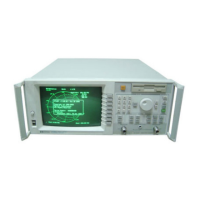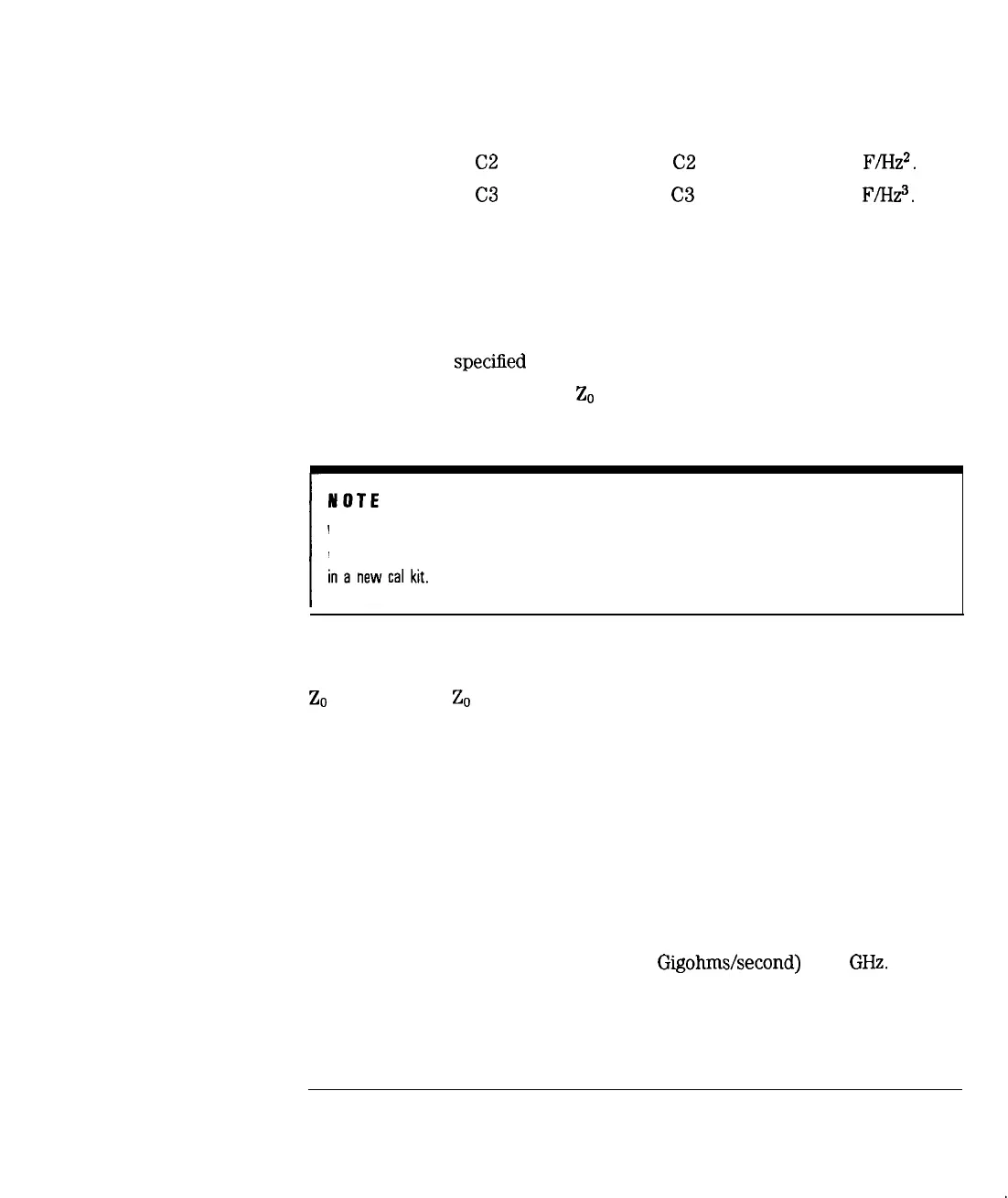Calibrating for Increased Measurement
Accuracy
Choose an Appropriate Calibration Method
Short
C2
is used to enter the
C2
term, expressed in
F/Hz2.
C3
is used to enter the
C3
term, expressed in
F/Hz3.
Short defines the standard type of a short for calibrating
reflection measurements.
Load Load defines the standard type of a load used for calibrating
reflection measurements.
Through Through defines the standard type as a transmission line of
specihed
length for transmission calibrations.
For all four standard types the
Z.
(characteristic impedance), Delay, and Loss
must be set.
When creating a cal kit file,
if a standard is not defined, the currently defined values for that standard
will be retained. The best practice is to define all of your standards and characteristics when loading
zo
Z.
is usually set to the system characteristic impedance
(usually either 50 or 75 ohms).
Delay
Delay is equivalent to a uniform length of transmission
line between the standard being defined and the actual
measurement plane. The DELAY is entered as the one-way
travel time from the measurement plane to the standard in
seconds. Delay can be determined from the precise physical
length of the standard, multiplied by the velocity factor
(reciprocal of the dielectric constant).
Loss
Loss is used to specify energy loss, due to skin effect, along a
one-way length of coaxial delay The value of loss is entered
as ohms/nanosecond (or
Gigohms/second)
at 1
GHz.
For
many applications, the loss value can be set to zero without
noticeable degradation.
6-21

